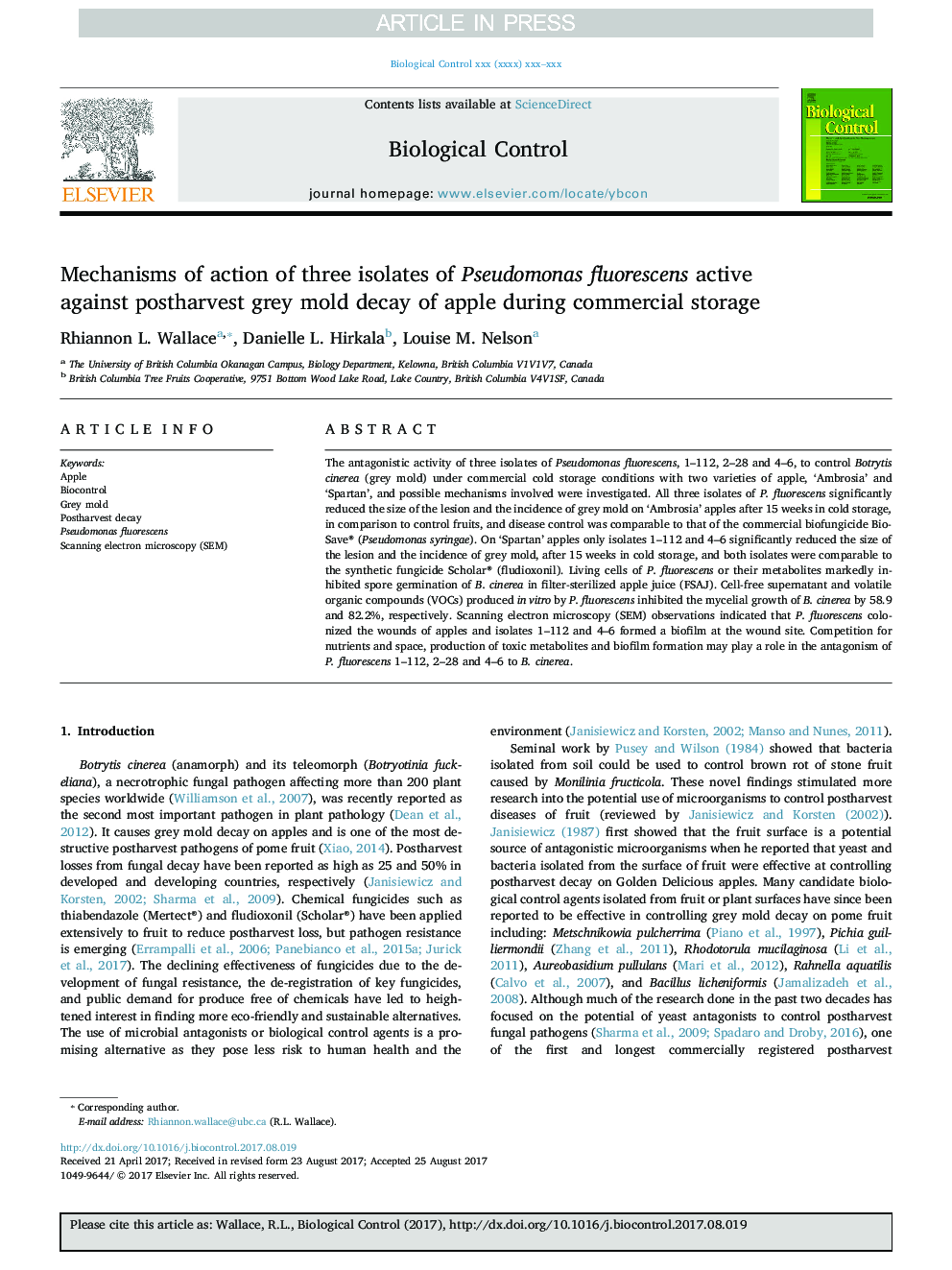| Article ID | Journal | Published Year | Pages | File Type |
|---|---|---|---|---|
| 8877738 | Biological Control | 2018 | 8 Pages |
Abstract
The antagonistic activity of three isolates of Pseudomonas fluorescens, 1-112, 2-28 and 4-6, to control Botrytis cinerea (grey mold) under commercial cold storage conditions with two varieties of apple, 'Ambrosia' and 'Spartan', and possible mechanisms involved were investigated. All three isolates of P. fluorescens significantly reduced the size of the lesion and the incidence of grey mold on 'Ambrosia' apples after 15Â weeks in cold storage, in comparison to control fruits, and disease control was comparable to that of the commercial biofungicide Bio-Save® (Pseudomonas syringae). On 'Spartan' apples only isolates 1-112 and 4-6 significantly reduced the size of the lesion and the incidence of grey mold, after 15Â weeks in cold storage, and both isolates were comparable to the synthetic fungicide Scholar® (fludioxonil). Living cells of P. fluorescens or their metabolites markedly inhibited spore germination of B. cinerea in filter-sterilized apple juice (FSAJ). Cell-free supernatant and volatile organic compounds (VOCs) produced in vitro by P. fluorescens inhibited the mycelial growth of B. cinerea by 58.9 and 82.2%, respectively. Scanning electron microscopy (SEM) observations indicated that P. fluorescens colonized the wounds of apples and isolates 1-112 and 4-6 formed a biofilm at the wound site. Competition for nutrients and space, production of toxic metabolites and biofilm formation may play a role in the antagonism of P. fluorescens 1-112, 2-28 and 4-6 to B. cinerea.
Keywords
Related Topics
Life Sciences
Agricultural and Biological Sciences
Agronomy and Crop Science
Authors
Rhiannon L. Wallace, Danielle L. Hirkala, Louise M. Nelson,
